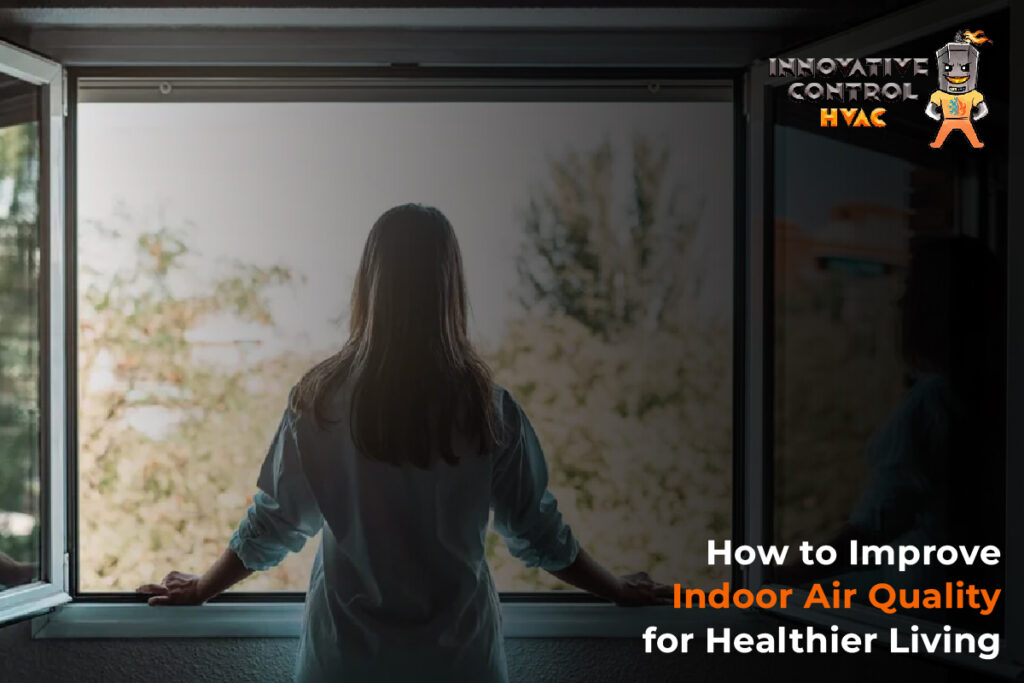
Breathing clean air isn’t just a luxury—it’s essential for our health and well-being. Yet, many of us are unaware that the air inside our homes can be more polluted than the air outside. From airborne contaminants to inadequate ventilation, numerous factors can compromise indoor air quality. But don’t worry! With some straightforward changes, you can transform your living space into a sanctuary of fresh air. Let’s dive into practical strategies to enhance indoor air quality for a healthier, happier home.
Understanding Indoor Air Pollution
Indoor air pollution stems from various sources, including household cleaning products, building materials, and even our beloved pets. These pollutants can lead to health issues like allergies, respiratory problems, and more. Recognizing these sources is the first step toward mitigation. For instance, common household items such as air fresheners and cleaning agents release volatile organic compounds (VOCs) that can degrade air quality.
The Importance of Proper Ventilation
Proper ventilation is crucial in diluting indoor pollutants and bringing in fresh outdoor air. When weather conditions allow, open windows and doors to facilitate airflow. Utilizing exhaust fans in kitchens and bathrooms can also help expel contaminants and moisture, preventing mold growth.
Upgrading Your HVAC Filtration System
Your home’s HVAC system plays a pivotal role in maintaining air quality. Upgrading to high-efficiency filters can trap finer particles, reducing the presence of allergens and pollutants. Regularly replacing these filters ensures optimal performance and cleaner air circulation.
Controlling Humidity Levels
High humidity levels can foster mold growth and dust mites, both of which are detrimental to air quality. Aim to keep indoor humidity between 30% and 50%. Using dehumidifiers and air conditioners can help maintain these levels, creating a less hospitable environment for allergens.
Regular Cleaning to Reduce Airborne Contaminants
Dust, pet dander, and other particles can accumulate quickly, contributing to poor air quality. Regular cleaning routines, including vacuuming with HEPA filters, dusting with microfiber cloths, and washing bedding frequently, can significantly reduce these contaminants.
Eliminating Tobacco Smoke
Tobacco smoke contains numerous harmful chemicals that can linger in the air and on surfaces. Establishing a smoke-free home by prohibiting indoor smoking can drastically improve air quality and reduce health risks associated with secondhand smoke.
Testing for Radon and Carbon Monoxide
Radon and carbon monoxide are colorless, odorless gases that pose serious health risks. Regular testing for these gases is essential. Installing carbon monoxide detectors and conducting radon tests can help identify and mitigate these invisible threats.
Using Air Purifiers for Added Protection
Air purifiers equipped with HEPA filters can capture a significant percentage of airborne particles, including allergens and pollutants. Placing these devices in commonly used areas can provide an extra layer of protection, especially for individuals with respiratory conditions.
Incorporating Indoor Plants Wisely
While certain indoor plants can help improve air quality by absorbing toxins, it’s essential to choose the right species and maintain them properly to prevent mold growth. Plants like spider plants and peace lilies can be beneficial additions to your home.
Avoiding Synthetic Fragrances
Many air fresheners and scented candles release VOCs that can degrade indoor air quality. Opting for fragrance-free or naturally scented products can reduce exposure to these harmful compounds.
Regular Maintenance of Ventilation Systems
Ensuring that your home’s ventilation systems are functioning correctly is vital. Regular inspections and maintenance can prevent the buildup of pollutants and ensure efficient operation.
Conclusion
Improving indoor air quality is a multifaceted approach that involves identifying pollution sources, enhancing ventilation, maintaining optimal moisture, and regular cleaning. By enforcing these strategies, you can produce a healthier living environment for you and your loved ones. Flashback, the air you breathe profoundly impacts your well-being, so take a visionary way moment for a healthier hereafter.
FAQs
Q1. How frequently should I change my HVAC filters?
It’s recommended to check your HVAC pollutants yearly and replace them at least every 3 months. Still, homes with faves or dislikes for victims may profit from further frequent changes.
Q2. Can inner shops ameliorate air quality?
Yes, certain inner plants can absorb poisons and ameliorate air quality. Still, it’s essential to choose the right shops and care for them duly to avoid earth growth.
Q3. What are the common signs of poor indoor air quality?
Symptoms like frequent headaches, disinclination, respiratory issues, and conspicuous dust buildup can indicate poor indoor air quality.
Q4. Is it necessary to use an air cleaner if I’ve a good HVAC system?
While a well-maintained HVAC system significantly improves air quality, using air cleaners can provide fresh filtration, especially in specific apartments or for individuals with respiratory conditions.
Q5. How can I test my home for radon?
Radon testing accoutrements are available for home use, or you can hire a professional to conduct the test. Regular testing is pivotal, as radon situations can change over time.
